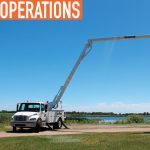Data. It’s the watchword for succeeding in today’s business environment. More and more, we’re told to let data be the guide. Quality improvement initiatives stress the importance of making decisions based on verifiable data rather than assumptions and guesswork. Nowhere is this truer than in fleet management, where there is a growing need to optimize data in order to enhance security, reduce costs, and improve overall visibility.
The fuel card is an important part of optimizing data. When it comes to focused fuel card over non fuel-focused solutions, the ideal fuel-focused solution is designed to provide the fleet manager with data and control, and the fleet with efficiency and accountability.
BEST PRACTICES:
Benefits a fuel-focused card provides fleet managers and drivers:
- The power of a secure, established network that ensures widespread acceptance
- The ability to limit purchases based on pre-authorized parameters
- The ability to capture detailed transaction data that can be flagged for exceptions, audited regularly, and allocated appropriately across the organization
The key is having data-driven visibility in your fleet program, at the level that your organization needs. The technology behind today’s best fleet and fuel-card programs can help integrate that data into your internal systems for greater visibility and control.
DATA NEEDS
The first step in gaining visibility is determining the kind of data you need, at what level of detail, and granularity. If your fleet department operates out of a general fund, you might not need to know more for overall expense management than monthly fuel or maintenance totals.
However, more and more organizations are moving toward a structure of internal service funds, where each department is its own operating center with its own budget. In that environment, there’s greater need for accountability, and that requires more robust and more detailed data.
For example, you may need to track costs not only on vehicles or equipment, but also on a line-item basis where each transaction is recorded, and the costs allocated to the departments that own them. Rather than just knowing that Driver X had $100 in fuel expenses this week, you may want to drill down to what kind of fuel was purchased and where, what the odometer reading was, and whether these things correlate appropriately. Then you have the data you need to allocate costs, and also can assess potential for fraud and identify whether additional communication or training is required.
Data-driven visibility in maintenance expenses is also a critical part of effective fleet management, especially when there are regulatory reporting requirements involved. If the DOT wants to verify tire purchases or inspection dates, having data available is imperative.
DASHBOARD IS KEY
A good fleet-card program can help you manage spending and set controls to match internal policies, so you can manage by exception. When it comes to managing that level of data, a good dashboard is imperative. The key is being able to define and easily access the data you need. You might have multiple pieces of information floating around—purchasing card data, corporate travel card data, and fuel card data—and trying to compile everything in one place can be difficult. A portal to aggregate the information provides simplicity.
Having that overall dashboard view of fleet-card data gives you the ability to see the macro view. Integrating the data further into the organization’s financial management system can help you see—and adjust—how your fleet is affecting overall company profitability and other metrics.
BETTER MANGAGEMENT
One of the best things you can do for cost control is make sure the people who are spending the money get the reports to see where their money is going. For example, if data shows fleet drivers are buying premium unleaded fuel when regular unleaded would suffice, significant cost savings could be attained by providing training about the company’s fuel-purchasing criteria. This would help ensure the fleet organization is doing what’s best for the company.
When retail fuel prices vary considerably from station to station, price and site locators can help guide drivers to an optimal fueling route. Additional data-driven visibility into fuel-card spending allows you to score drivers on how they are complying with those parameters, and provide valuable corrective feedback. Best practices call for fleet managers to use the fuel-card data to check for unusual product codes, inconsistent fuel quantity, and unusually large transaction amounts. Exceptions can then be addressed with the driver.
RECOMMENDATIONS
What can your organization do to move the needle in the right direction?
- Determine your data requirements
- Review your options for fuel and fleet-card
solutions - Implement a program that provides the greatest
value - Monitor and refine over time for maximum results
Having verification data from a fleet-card program can positively impact your bottom line by providing visibility into fuel spending and allowing a “best practices” approach for the company.
FOR MORE INFORMATION:
Jeffrey Pape is senior vice president, U.S. Bank Transportation Solutions. Find out more about how fuel cards can impact your fleet and bottom line, visit www.bankonus.usbpayment.com.
_______________________________________________________________________
MODERN WORKTRUCK SOLUTIONS: NOVEMBER 2017 ISSUE
Did you enjoy this article?
Subscribe to the FREE Digital Edition of Modern WorkTruck Solutions magazine.
![]()




